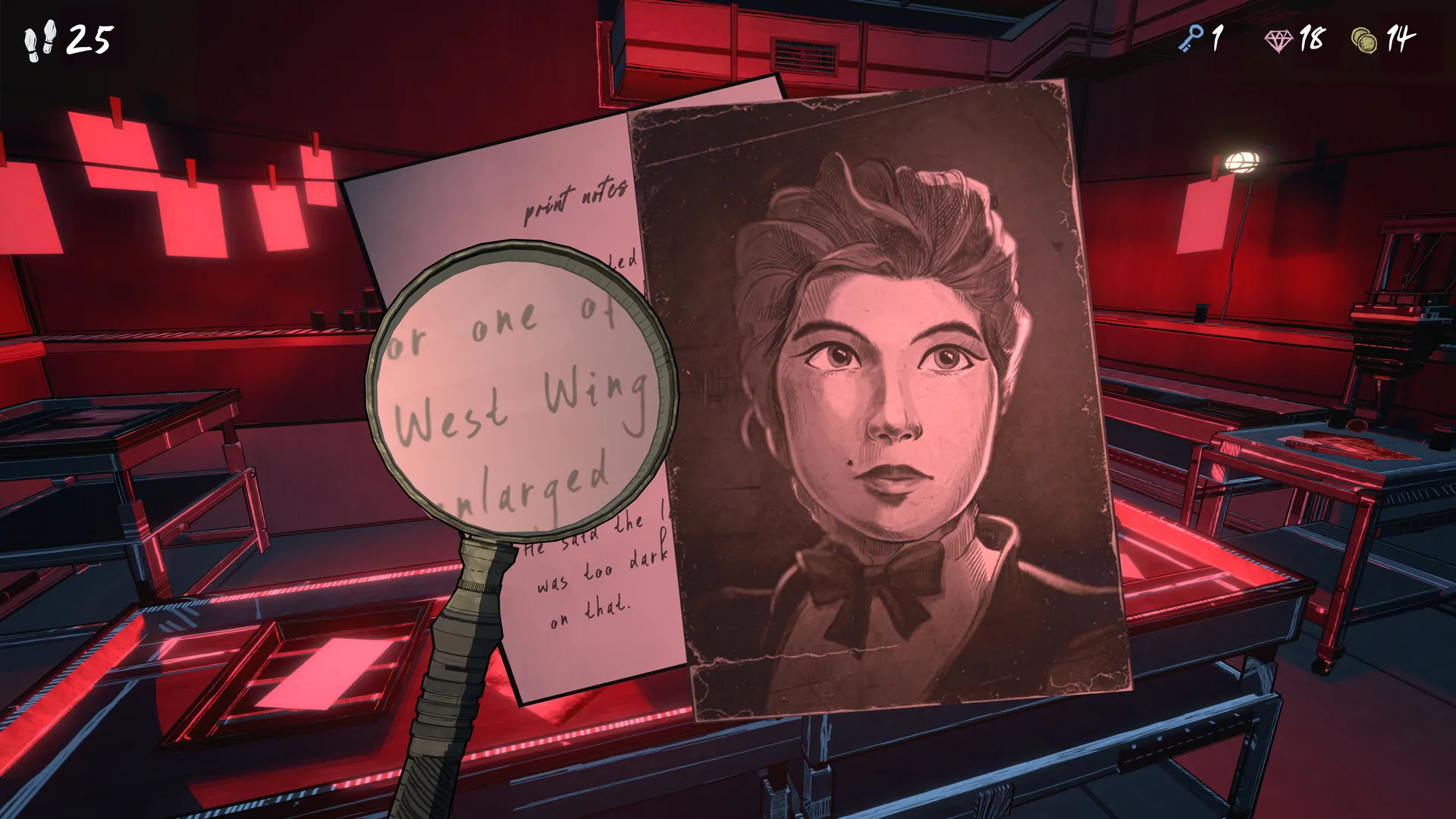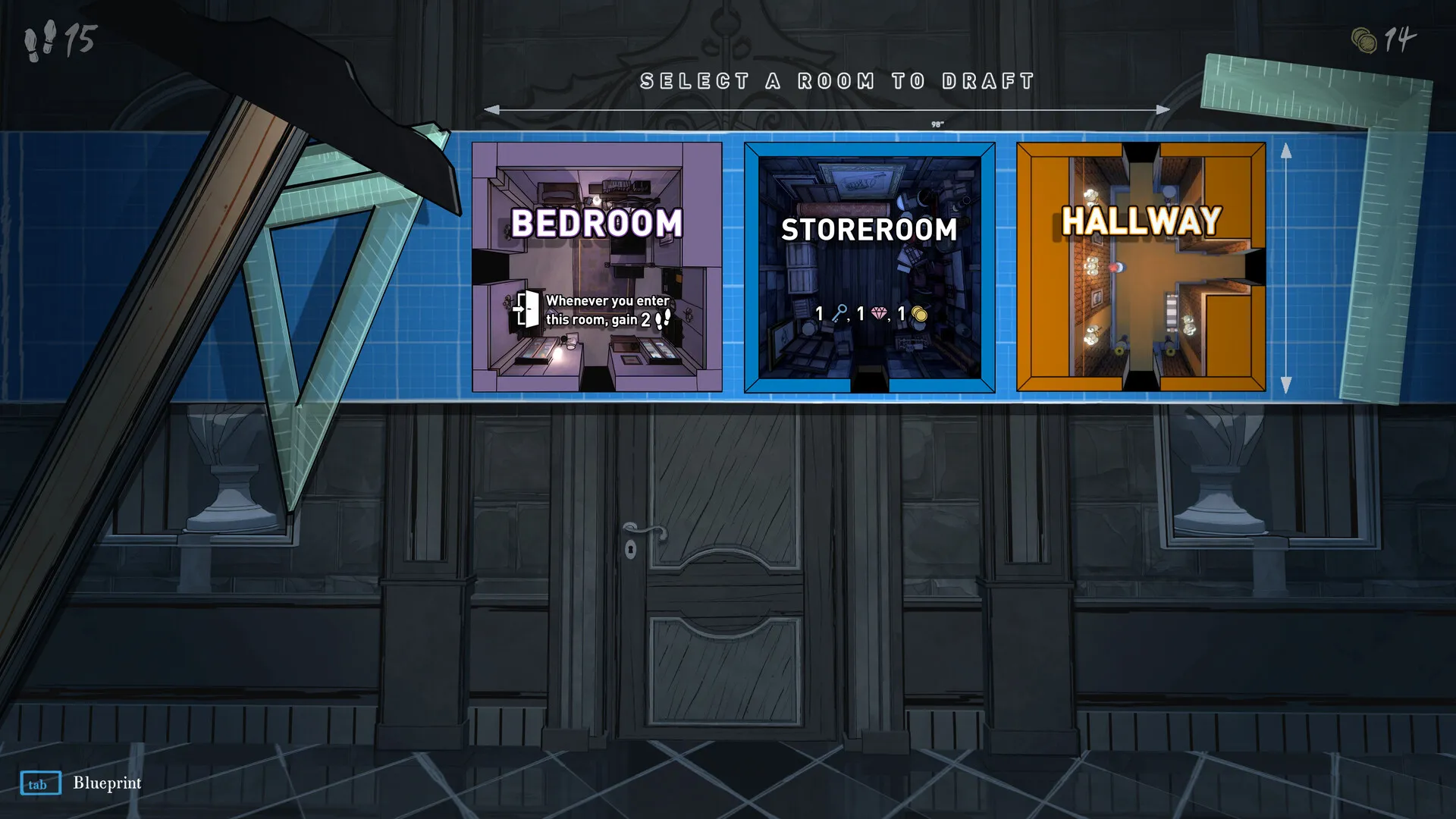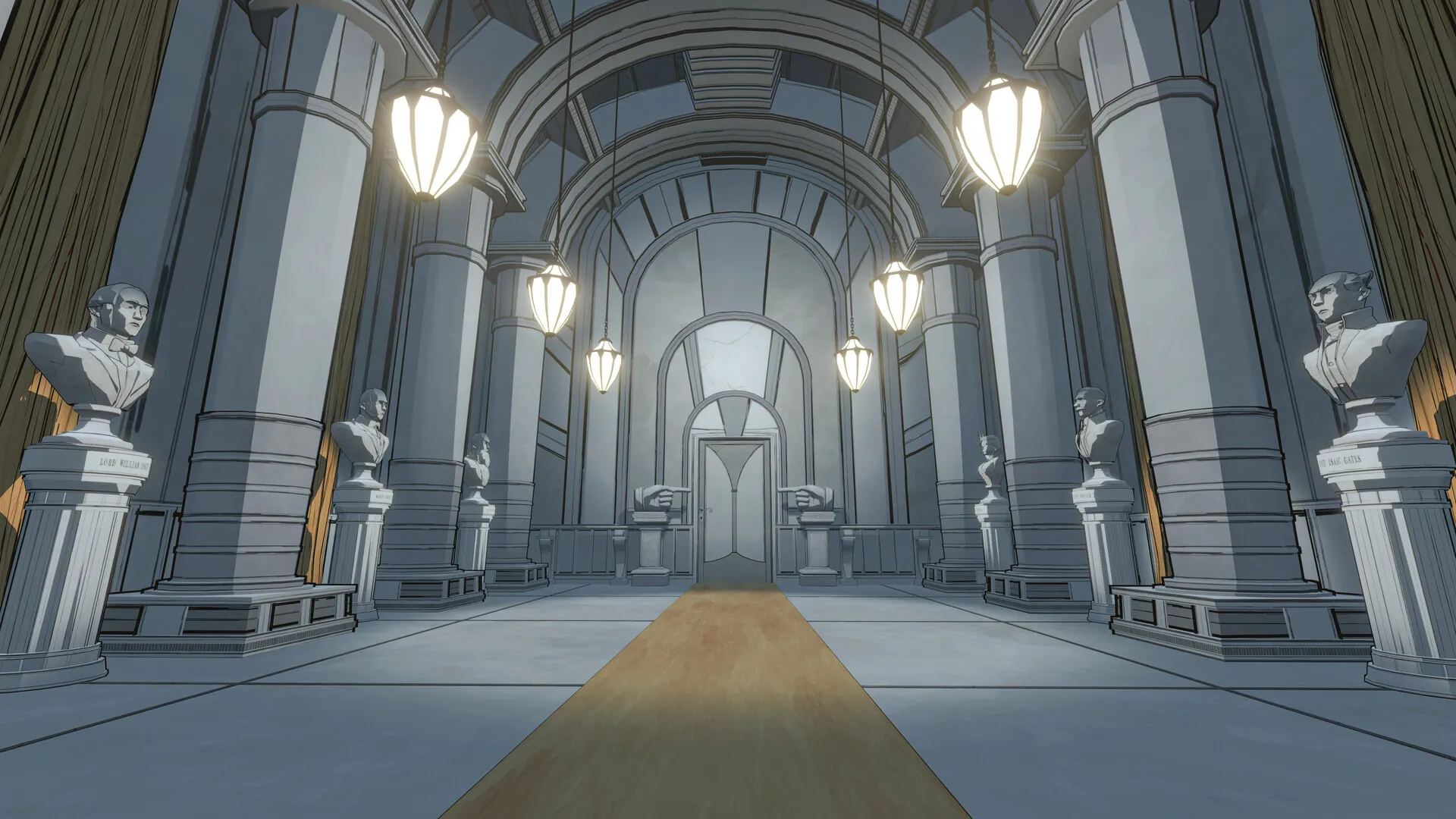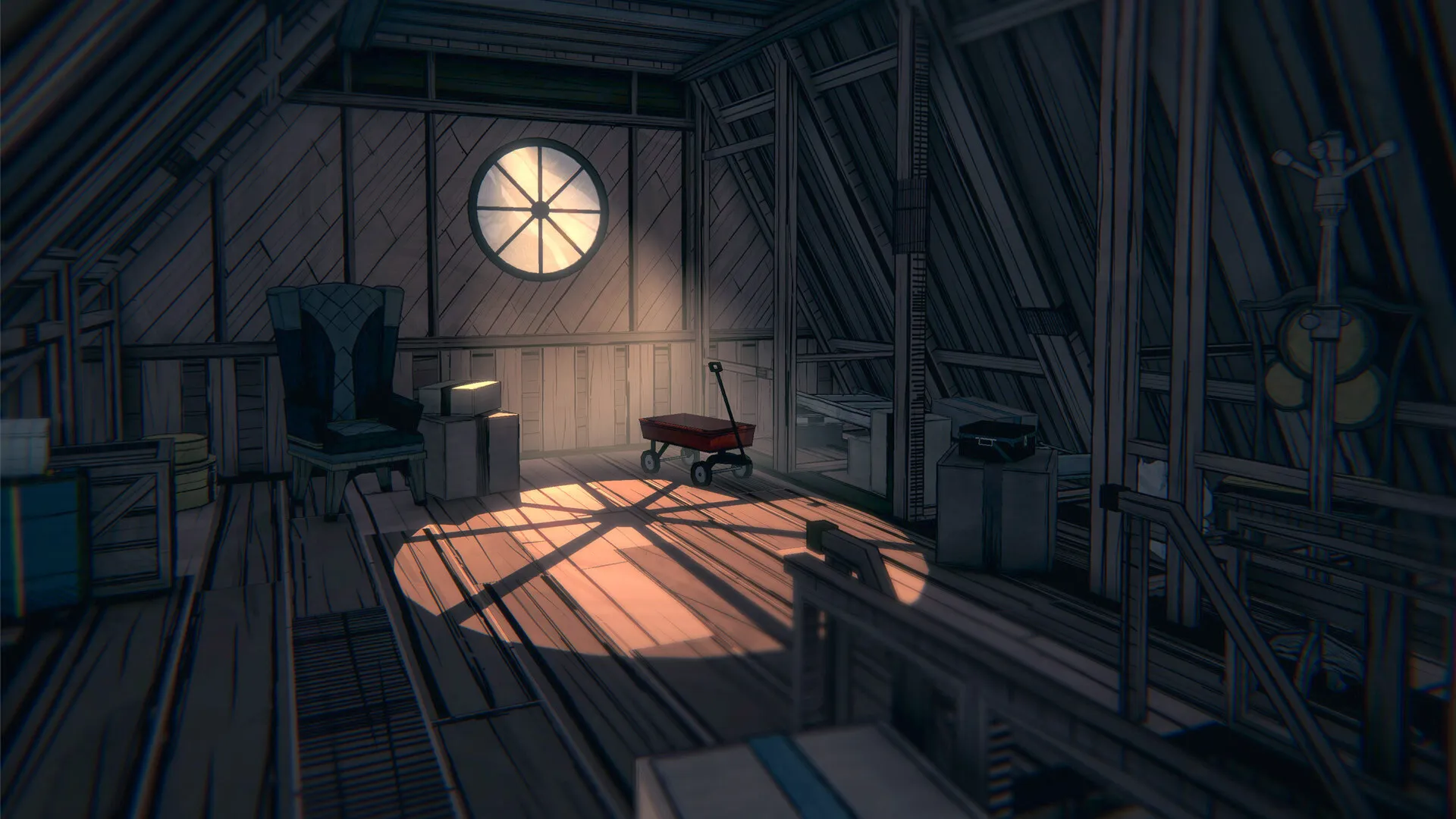Simon steps into an inherited mansion filled with corners waiting to be revealed. As a teenager tasked with claiming an inheritance left by a notably unconventional great uncle, he faces a challenge that unfolds in a constantly rearranging estate of 45 spaces. The primary goal centers on locating a well-hidden 46th space—a secret room that promises to unlock the legacy of the mansion.
The game brings forward an atmosphere that is shrouded in mystery and suspense, inviting attentive minds to inspect every detail. The presentation of the estate carries an intellectual charm that reminds one of classic puzzlers and narrative-driven titles.
The architectural design of the mansion shifts day by day, and each series of spaces emerges as a fresh puzzle that demands careful thought and observation. The presence of various interactive room options, along with systems for resource handling and choice-driven progression, rewards players who study the clues scattered among the rooms.
This title distinguishes itself by offering a scenario where each run transforms the experience into a new chance for discovery. The challenge of constructing a coherent layout out of random elements coupled with a layered story of family secrets creates a setting that tests both strategic thinking and puzzle-solving acumen. The smart construction of the manor’s design recalls the detail-oriented intricacies found in esteemed first-person puzzlers, providing a rich platform for analytical exploration.
Gameplay Mechanics and Systems
The drafting system in this game is both inventive and demanding. Each time Simon encounters a door, he is offered three room prospects such as a kitchen, a den, or an observatory. These choices directly affect the mansion’s evolving structure, which takes shape as the player decides which room will occupy each grid space.
Each selection not only influences the immediate layout but also sets up long-term considerations, since the arrangement determines which doorways will be accessible and which paths might eventually become blocked. This design element shines when compared to other titles in the puzzle-adventure niche where static environments often limit decision-making.
Managing the finite supply of “steps” introduces an engaging layer of strategic resource allocation. Every movement between rooms consumes one step, forcing a constant assessment of whether to push forward or backtrack.
The tension rises as a player nears the end of available steps, with careful planning proving essential. For instance, when a critical room remains out of reach due to previous choices, retracing steps can quickly deplete the remaining count, turning a potential recovery into a costly setback.
The game incorporates various resources such as coins, keys, gems, and exclusive items that interact with the drafting process. Coins may open doors to hidden areas, keys provide access to locked spaces, and gems often grant the chance to choose a specialty room. Each resource introduces a layer of tactical depth that enriches the decision-making process.
On top of the building process is an underlying grid system that organizes the mansion into a five-by-nine layout. Each drafted room fills one grid space, constructing both useful corridors and potential dead ends along the way. Over time, persistent upgrades – like expanding the daily step count or unlocking permanent passages – serve as rewards for thoughtful planning, turning short-term runs into building blocks for future successes.
Puzzle Design, Challenge, and Player Engagement
The game presents a wide range of puzzles that test various aspects of a player’s reasoning skills. Players encounter problems that require solving math queries or logic-based tests alongside challenges that demand the correct timing of button sequences or lever activations.
Some puzzles are contained within a single room, while others require piecing together hints distributed across several spaces. This assortment of puzzle types offers a comprehensive test of analytical skill and rewards the observant player with consistent breakthroughs.
A key element in the puzzle-solving process is the role played by the drafting mechanic. At each door, the decision of which room to add becomes an investment in future challenges. For instance, a room choice might offer a clue or an item that later becomes essential in solving a locked door or a complex environmental riddle.
This system mirrors mechanics seen in notable titles of the first-person puzzling genre, where every selection builds toward larger, interrelated challenges. The moment when details from separate rooms align to reveal a hidden pattern triggers a tangible sense of satisfaction and validates the careful choices made earlier.
Environmental storytelling plays a significant role, as the game scatters subtle hints throughout its spaces using visual cues, written documents, or peculiar set pieces. Players often find it beneficial to keep physical records or sketches to capture these details. The act of jotting down key observations and mapping out room connections transforms the game into an interactive mystery.
Moreover, the difficulty scales over time, with early puzzles serving as a gentle introduction to mechanics that later evolve in complexity. Occasional setbacks—when an expected room is not available due to chance—encourage reevaluation of strategies and reward persistence with new insights during subsequent plays.
Narrative and World-Building
The story centers on Simon inheriting an enigmatic estate filled with concealed meanings and a complicated family history. The quest to uncover the hidden 46th room sets the tone, as each puzzling encounter feels tied to an unfolding mystery about an estranged lineage.
The narrative reaches beyond simple exploration by making every room a repository of secrets—from the drawing room to shadowy hallways—each containing small fragments of lore that contribute to a larger, interconnected past. In many respects, the narrative device employed here recalls the storytelling found in celebrated investigative puzzlers like Return of the Obra Dinn, where seemingly minor clues ultimately shape the overall understanding of an intricate backstory.
Every area within the mansion bears witness to the history of its lineage, with carefully placed documents, objects, and ambient details that the perceptive player is encouraged to collect and piece together. For example, a specific key obtained early on might later unlock more than just a door; it hints at unresolved family rivalries and forgotten promises.
These details emerge gradually over several runs as the mansion reshuffles, ensuring that players experience a progressive reveal of narrative strands. The design encourages careful note-taking, turning the act of exploration into an ongoing investigation where every discovery feels like a step closer to grasping the estate’s full history.
The interplay between puzzles and narrative is particularly noteworthy. Each challenge is not simply a test of logic but a chance to uncover new aspects of the mansion’s past, with clues planted within the very mechanics of room selection and resource management. This approach enriches the experience by making the process of solving puzzles deeply intertwined with understanding the dark secrets of Simon’s heritage.
Visual, Audio, and Artistic Presentation
The game presents a striking cel-shaded art style that immediately sets a distinct mood. The characters and environments benefit from smooth outlines and deliberate lighting choices, resulting in visuals that carry a playful yet mysterious flavor.
Each room is designed with care, where sharp color contrasts contribute to mood and help distinguish various areas. The drawing rooms, shadowed corridors, and bright observatories blend detail with clean graphical form, making every space feel purposefully arranged.
Sound design plays an essential role in this experience. A thoughtful background score punctuates the ambiance, with measured musical lines that enhance tension during puzzle sequences and softer cues during quieter moments. Specific sounds tied to new discoveries or resource collection create a subtle sense of progression. These audio choices guide the player’s feelings as they explore the shifting mansion, ensuring that every step feels supported by a tailored acoustic environment.
The combination of visual and sound elements works together to create an immersive setting that feels alive and responsive. The interplay of distinct art direction with a carefully curated audio track brings out nuances in each space, sparking curiosity with every room entered and every corridor passed. This careful orchestration is comparable to other first-person puzzlers that emphasize mood, where detailed art and sound unite to encourage exploration and sustained engagement.
Replayability, Strategic Depth, and Customization
The game’s randomized drafting system keeps each playthrough fresh and unpredictable. Every run presents distinct room arrangements as Simon progresses through a shifting mansion, making each attempt feel like a brand-new challenge.
The unpredictability means players cannot rely on memory alone and must adapt strategies on the fly. This ever-changing layout shares similarities with other titles in the roguelite category, where the environment transforms with every play. Players find themselves in situations where a carefully planned route might be interrupted by an unforeseen room selection, raising the stakes for every decision made.
Permanent enhancements and unlockable items offer a pathway to improved future journeys. With each run, players gain opportunities that ease later attempts, allowing for both tactical decision-making during a session and thoughtful strategy between sessions.
These design choices give added layers of depth, transforming setbacks into valuable learning moments. The freedom to influence which room types appear creates a sense of control over the estate’s configuration. This flexibility rewards experimentation and risk-taking, as occasionally drawing an unfavorable room does not derail progress; instead, it encourages adjusting tactics and exploring different approaches.
The Review
Blue Prince
Blue Prince delivers a smart, well-crafted experience with inventive room drafting, meaningful puzzle challenges, and a layered narrative steeped in mystery. The detailed visuals and immersive sound design enhance the atmosphere, providing a setting that supports both casual exploration and strategic play. Although random elements can sometimes cause setbacks, careful planning and experimentation turn these into rewarding moments.
PROS
- Innovative room drafting technique that keeps gameplay fresh
- A wide variety of puzzles offering clever challenges
- Immersive narrative integrated into the mansion's design
- Striking cel-shaded visuals paired with atmospheric sound
- Long-term progression and customizable strategies enhance replayability
CONS
- Unpredictable random elements can lead to occasional setbacks
- Steep learning curve due to complex resource management
- Heavy reliance on chance may disrupt planned strategies
- The need for detailed note-taking can be overwhelming for some




















































